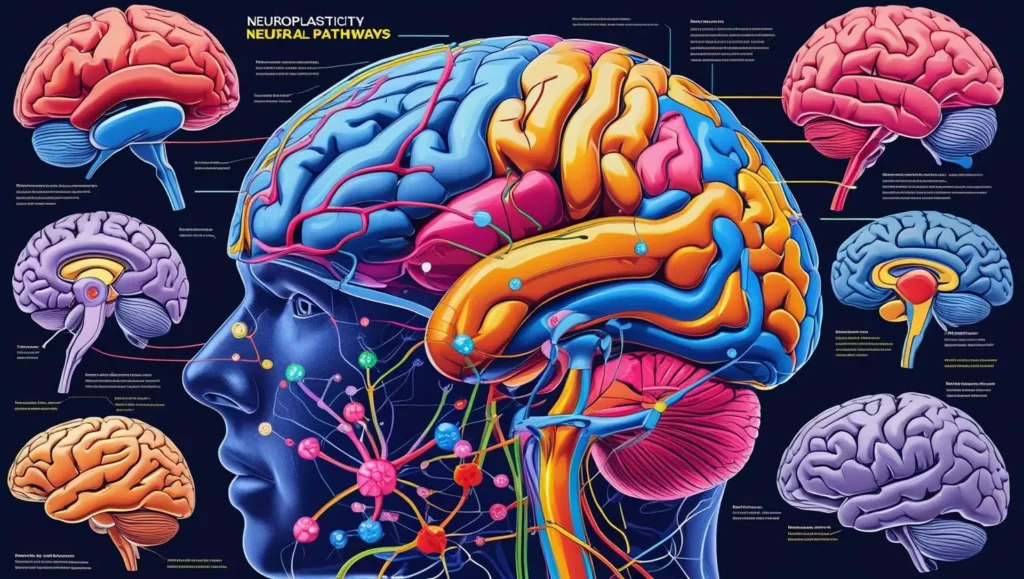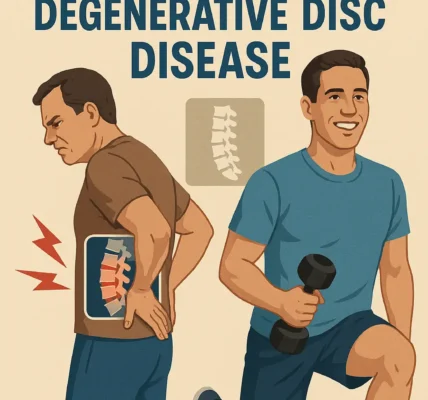Mental health has become one of the most critical health concerns globally, with approximately 970 million people worldwide living with a mental health disorder. Understanding how to improve mental health is no longer optional—it’s essential for thriving in today’s world. This comprehensive guide explores proven strategies, current statistics, and actionable steps anyone can take to enhance their mental wellbeing.
Understanding Mental Health: The Foundation for Improvement
Mental health encompasses our emotional, psychological, and social well-being. It affects how we think, feel, and act as we cope with life, helping determine how we handle stress, relate to others, and make choices. Unlike physical health, mental health exists on a spectrum and requires consistent attention and care.
Key Mental Health Statistics for 2025:
- 1 in 5 U.S. adults experience mental illness each year
- 50% of all lifetime mental illness begins by age 14, and 75% by age 24
- Around 20% of the world’s children and adolescents have a mental health condition
- Depression and anxiety result in a staggering cost of US$ 1 trillion per year in lost productivity globally
The Science Behind Mental Health Improvement
Research consistently shows that mental health improvement is possible through evidence-based interventions. Recent research highlights that 65% of women consumers now actively seek products or services to improve their mental well-being, marking a 33% increase from just three years ago.
The brain’s neuroplasticity—its ability to reorganize and form new neural connections—provides hope for anyone seeking to improve their mental health. This scientific understanding forms the foundation for the strategies outlined in this guide.
1. Exercise and Physical Activity: The Natural Antidepressant
The Mental Health Benefits of Exercise
Physical activity stands as one of the most powerful tools for improving mental health. Regular exercise can have a profoundly positive impact on depression, anxiety, and ADHD. It also relieves stress, improves memory, helps you sleep better, and boosts your overall mood.
How Exercise Improves Mental Health:
- Endorphin Release: When you engage in physical exercise, your body releases chemicals known as endorphins, which are natural mood elevators
- Neurotransmitter Boost: Physical activity stimulates the production of serotonin, a neurotransmitter that plays a crucial role in regulating mood, anxiety and sleep
- Stress Hormone Reduction: Physical activity lowers the level of stress hormones (called adrenaline and cortisol) in your body, which makes you feel less stressed
Exercise Recommendations for Mental Health
| Exercise Type | Mental Health Benefits | Recommended Duration | Frequency |
|---|---|---|---|
| Aerobic Exercise | Reduces depression and anxiety symptoms | 30-45 minutes | 3-5 times per week |
| Strength Training | Improves self-esteem and body image | 20-30 minutes | 2-3 times per week |
| Yoga | Reduces stress, improves mindfulness | 30-60 minutes | 2-4 times per week |
| Walking | Boosts mood, accessible for beginners | 30 minutes | Daily |
| Tai Chi | Enhances emotional regulation | 30-45 minutes | 2-3 times per week |
Just 30 minutes of walking every day can boost your mood and improve your health. Small amounts of exercise add up, so don’t be discouraged if you can’t do 30 minutes at one time.
2. Cognitive Behavioral Therapy (CBT) and Mindfulness-Based Approaches
Understanding CBT for Mental Health
Cognitive Behavioral Therapy represents the gold standard in mental health treatment. CBT teaches us to recognize the connections between thoughts emotions and behaviors and how to manage thoughts that aren’t helpful.
Mindfulness-Based Cognitive Therapy (MBCT)
MBCT combines traditional cognitive therapy with mindfulness practices. This therapy was formulated to address depression. Using these tools, the mindfulness-based therapist teaches a client to be in the here and now as well as break away from negative thought patterns.
Key Components of MBCT:
- Present-moment awareness
- Non-judgmental observation of thoughts
- Acceptance-based coping strategies
- Decentering from negative thoughts
Comparison: Traditional CBT vs. Mindfulness-Based CBT
| Aspect | Traditional CBT | Mindfulness-Based CBT (MBCT) |
|---|---|---|
| Primary Focus | Challenging negative thoughts | Observing thoughts without judgment |
| Approach | Problem-solving oriented | Acceptance-based |
| Technique | Thought restructuring | Mindful awareness |
| Prevention | Relapse prevention through skills | Relapse prevention through awareness |
| Duration | 12-20 sessions typically | 8-week structured program |
Evidence from studies highlights the effectiveness of MBCT in reducing symptoms of depression, anxiety, and stress. MBCT was also shown to enhance cognitive functions and emotional regulation across diverse populations.
3. Social Connections: The Power of Human Relationships
The Critical Role of Social Support
Social connections serve as a cornerstone of mental health. Living in isolation reduces our chances of survival and social isolation increases the risk for premature mortality by 29%.
Mental Health Benefits of Strong Social Connections:
- Adults who report feeling lonely often are more than twice as likely to develop depression as adults who report rarely or never feeling lonely
- Strong social connections can help reduce the risk of depression and anxiety, improve self-esteem, and increase feelings of happiness and life satisfaction
- People who lack social connection have a 30% higher risk of early death, comparable to much better recognized risks such as smoking, excessive drinking or obesity
Types of Social Connections and Their Impact
| Connection Type | Mental Health Impact | How to Strengthen |
|---|---|---|
| Family Relationships | Provide emotional security and belonging | Regular communication, family activities |
| Friendships | Offer companionship and shared experiences | Active listening, shared interests |
| Romantic Partnerships | Deep emotional support and intimacy | Open communication, quality time |
| Community Networks | Broader sense of belonging | Volunteering, group activities |
| Professional Relationships | Purpose and achievement | Networking, mentorship |
Building and Maintaining Social Connections
There are lots of things you could try to help build stronger and closer relationships: if possible, take time each day to be with your family, for example, try arranging a fixed time to eat dinner together.
Practical Strategies:
- Schedule regular check-ins with friends and family
- Join community groups or clubs based on interests
- Volunteer for causes you care about
- Practice active listening in conversations
- Be vulnerable and share your authentic self
4. Nutrition and Mental Health: The Gut-Brain Connection
How Diet Affects Mental Wellbeing
The relationship between nutrition and mental health is profound. A balanced diet and plenty of water can improve your energy and focus throughout the day. Good nutrition will help you feel better physically but could also improve your mood and decrease anxiety and stress.
Key Nutritional Factors:
- Omega-3 fatty acids: Support brain function and mood regulation
- Complex carbohydrates: Stabilize blood sugar and mood
- Protein: Provides amino acids necessary for neurotransmitter production
- Vitamins and minerals: Essential for optimal brain function
Foods That Support Mental Health vs. Foods to Limit
| Beneficial Foods | Mental Health Benefits | Foods to Limit | Potential Negative Effects |
|---|---|---|---|
| Fatty Fish | Rich in omega-3s, reduces inflammation | Processed Foods | Increase inflammation, mood swings |
| Leafy Greens | High in folate, supports brain function | Excessive Sugar | Blood sugar spikes, energy crashes |
| Nuts and Seeds | Healthy fats, protein for stable mood | Excessive Caffeine | Anxiety, sleep disruption |
| Whole Grains | Steady energy, serotonin production | Alcohol | Depressant effects, sleep disruption |
| Berries | Antioxidants, protect brain cells | Refined Carbs | Blood sugar instability |
5. Sleep Hygiene: The Foundation of Mental Wellness
The Sleep-Mental Health Connection
Quality sleep is fundamental to mental health. Sleep deprivation can disrupt our ability to consolidate memories; increase irritability, anxiety, depression; and even lead to the risk of developing other health problems like cardiovascular disease and immune suppression.
Sleep’s Impact on Mental Health:
- Memory consolidation: Essential for processing daily experiences
- Emotional regulation: Helps maintain stable mood
- Stress recovery: Allows the body to reset cortisol levels
- Cognitive function: Improves focus and decision-making
Sleep Hygiene Best Practices
| Sleep Strategy | Implementation | Mental Health Benefit |
|---|---|---|
| Consistent Sleep Schedule | Same bedtime/wake time daily | Regulates circadian rhythm |
| Screen Time Limits | No screens 1 hour before bed | Reduces blue light interference |
| Bedroom Environment | Cool, dark, quiet space | Promotes deeper sleep |
| Relaxation Routine | Reading, meditation, gentle stretches | Signals body to prepare for sleep |
| Caffeine Management | Avoid caffeine after 2 PM | Prevents sleep disruption |
6. Stress Management Techniques
Understanding Stress and Mental Health
Chronic stress significantly impacts mental health. Stress can increase your risk of sleep problems and feelings of overwhelm in the short term, and mental health problems and heart disease long-term.
Evidence-Based Stress Management Techniques
Immediate Stress Relief:
- Deep breathing exercises
- Progressive muscle relaxation
- Mindfulness meditation
- Brief physical activity
Long-term Stress Management:
- Regular exercise routine
- Healthy boundary setting
- Time management skills
- Professional support when needed
Mindfulness vs. Traditional Stress Management
| Approach | Method | Benefits | Time Required |
|---|---|---|---|
| Mindfulness | Present-moment awareness | Reduces rumination, increases emotional regulation | 5-20 minutes daily |
| Progressive Relaxation | Systematic muscle tension/release | Physical tension relief | 10-30 minutes |
| Cognitive Restructuring | Challenging negative thoughts | Changes thought patterns | Ongoing practice |
| Physical Exercise | Movement-based stress relief | Endorphin release, energy outlet | 20-60 minutes |
7. Professional Mental Health Support
When to Seek Professional Help
If you are experiencing severe or distressing symptoms that have lasted 2 weeks or more, it’s important to seek professional support.
Warning Signs:
- Persistent sadness or hopelessness
- Significant changes in sleep or appetite
- Loss of interest in activities
- Difficulty concentrating
- Thoughts of self-harm
Types of Mental Health Professionals
| Professional Type | Specialization | Treatment Approach | Best For |
|---|---|---|---|
| Psychologist | Therapy and assessment | CBT, DBT, humanistic therapy | Talk therapy, behavioral changes |
| Psychiatrist | Medical treatment | Medication management | Severe symptoms, medication needs |
| Licensed Counselor | General mental health | Various therapeutic approaches | General support, life transitions |
| Social Worker | Systemic support | Case management, therapy | Complex social situations |
8. Lifestyle Factors That Support Mental Health
Creating a Mental Health-Supportive Environment
Environmental factors significantly influence mental wellbeing. Consider these elements:
Physical Environment:
- Natural light exposure
- Organized, clean living space
- Access to nature
- Comfortable, personalized spaces
Social Environment:
- Supportive relationships
- Healthy boundaries
- Community involvement
- Reduced toxic interactions
Daily Routine Elements for Mental Health
| Time of Day | Activity | Mental Health Benefit |
|---|---|---|
| Morning | Exercise, meditation, healthy breakfast | Energy boost, positive start |
| Midday | Social connection, outdoor time | Mood regulation, vitamin D |
| Afternoon | Productive work, brief breaks | Sense of accomplishment |
| Evening | Relaxation, reflection, preparation | Stress reduction, sleep preparation |
Personal Review: Implementing Mental Health Strategies
Having researched and analyzed numerous studies on mental health improvement, the evidence clearly supports a multi-faceted approach. The most effective strategies combine physical activity, social connection, professional support when needed, and consistent self-care practices.
What Works Best:
- Start small: Set realistic expectations. Many resolutions fail early because people expect changes overnight
- Consistency over intensity: Regular, moderate efforts outperform sporadic intense efforts
- Personalization: Different strategies work for different people
- Professional guidance: Don’t hesitate to seek help when needed
Technology and Mental Health
Digital Tools for Mental Health
Artificial intelligence (AI) has the potential to transform mental health treatment by streamlining healthcare workflows, providing valuable patient data insights, and facilitating better care.
Beneficial Technology:
- Mental health apps for meditation and mood tracking
- Telehealth for accessible therapy
- Online support communities
- Educational resources and self-help tools
Technology to Limit:
- Social media use has been linked to depression and anxiety. From comparison culture leading to lower self-esteem to the constant stream of negative news, social media may have a bigger effect on your daily mental health than you think
Digital Wellness Strategies
| Strategy | Implementation | Mental Health Benefit |
|---|---|---|
| Screen Time Limits | Set daily usage limits | Reduces overstimulation |
| Social Media Breaks | Regular digital detoxes | Decreases comparison, anxiety |
| Mindful Technology Use | Intentional engagement | Improves focus, presence |
| Positive Content Curation | Follow uplifting accounts | Supports positive mindset |
Breaking Mental Health Stigma
The Importance of Open Conversation
As a therapist, I believe mental health should be part of everyday conversations—not just something we talk about when things are tough. Reducing stigma requires collective effort and understanding.
Ways to Combat Stigma:
- Use person-first language
- Share personal experiences when appropriate
- Educate others about mental health
- Support mental health awareness initiatives
- Challenge misconceptions and stereotypes
Creating Your Personal Mental Health Plan
Assessment and Goal Setting
Before implementing changes, assess your current mental health status and set realistic goals.
Self-Assessment Questions:
- How would you rate your current mental health (1-10)?
- What are your main stressors?
- What coping strategies do you currently use?
- What areas need the most improvement?
- What support systems do you have?
The 30-60-90 Day Mental Health Improvement Plan
| Timeframe | Focus Areas | Specific Actions | Success Metrics |
|---|---|---|---|
| First 30 Days | Foundation building | Daily 10-minute walk, establish sleep schedule | Energy levels, mood tracking |
| 60 Days | Skill development | Add mindfulness practice, social connections | Stress levels, relationship quality |
| 90 Days | Integration | Comprehensive routine, professional support if needed | Overall wellbeing, goal achievement |
Frequently Asked Questions About Mental Health Improvement
How long does it take to see mental health improvements?
Most people begin noticing improvements within 2-4 weeks of consistent practice, though significant changes may take 8-12 weeks.
Can mental health be improved without medication?
Many mental health conditions can be effectively managed through lifestyle changes, therapy, and self-care practices, though medication may be beneficial for some individuals.
Is it normal to have setbacks in mental health improvement?
Yes, setbacks are a normal part of the process. Mental health improvement is not linear, and developing resilience includes learning to navigate difficult periods.
Conclusion: Your Journey to Better Mental Health
Improving mental health is a journey that requires patience, consistency, and often professional support. The strategies outlined in this guide are backed by scientific research and have helped millions of people enhance their mental wellbeing.
Key Takeaways:
- Mental health improvement is possible for everyone
- Small, consistent changes create lasting impact
- Professional help is a sign of strength, not weakness
- Social connections are crucial for mental wellbeing
- Physical health and mental health are interconnected
Remember, by making conscious commitments to our mental well-being, we can create a ripple effect of positive change—in our own lives and in our community.
If you’re struggling with your mental health, don’t hesitate to reach out for support. If you or someone you know is struggling or having thoughts of suicide, call or text the 988 Suicide & Crisis Lifeline at 988.
This comprehensive guide serves as an educational resource and should not replace professional medical advice. Always consult with qualified healthcare providers for personalized mental health care.
Sources: This article draws from recent research from the World Health Organization, National Institute of Mental Health, CDC, Mayo Clinic, Harvard Health, and peer-reviewed studies published in 2024-2025.



![Collection of people doing different types of exercises - running, yoga, weightlifting, walking]](http://discoverbribune.site/wp-content/uploads/2025/06/Collection-of-people-doing-different-types-of-exercises-running-yoga-weightlifting-walking-1024x579.webp)

![Peaceful bedroom setup with sleep hygiene elements highlighted]](http://discoverbribune.site/wp-content/uploads/2025/06/Peaceful-bedroom-setup-with-sleep-hygiene-elements-highlighted-1024x579.webp)

![Professional mental health consultation setting]](http://discoverbribune.site/wp-content/uploads/2025/06/Professional-mental-health-consultation-setting-1024x579.webp)
![Person going through a healthy daily routine from morning to night]](http://discoverbribune.site/wp-content/uploads/2025/06/Person-going-through-a-healthy-daily-routine-from-morning-to-night-1024x579.webp)
![Balanced technology use - person using helpful mental health app vs. putting phone away for real-world connection]](http://discoverbribune.site/wp-content/uploads/2025/06/Balanced-technology-use-person-using-helpful-mental-health-app-vs.-putting-phone-away-for-real-world-connection-1024x579.webp)



